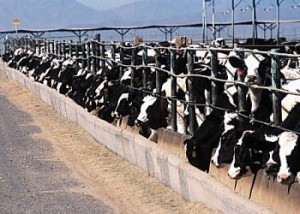
In the first part of this post, courtesy of Raffi Khatchadourian’s article in The New Yorker, I introduced you to Givaudan, the biggest manufacturer of flavors and fragrances in the world. (For those of you who already knew about Givaudan, hot shit!). This company and others like it manufacture flavors for addition to processed food and beverages. They are constantly searching for new flavors, mixing and matching the chemical building blocks of known tastes, as well as mimicking existing flavors that are proven favorites with the livestock consumers. Take Red Bull and other energy drinks, for example.
People in the flavor business use the term “white spaces” as a label for combinations of flavor attributes that consumers enjoy but that aren’t available in an existing product. Mr. Katchadourian writes:
Fewer and fewer beverage companies develop new flavors on their own, even as they are fiercely engaged in what can only be called The Great Flavor Rush. The fight over white spaces in the supermarket aisles has grown so furious that grocery shelves are lined with bottles promoting baroque exoticism: energy drinks and waters laced with kiwi-dragonfruit, or hibiscus-orange, or jackfruit-guava, or agave-melon, or clove-cardamon-cinnamon.
Coming up with the next big thing – we all know that’s the grand prize in our consumer-driven culture. But if you can’t pull that off, mimicking the current big thing is not bad for second place. Wouldn’t you know it, those same rules hold true in the flavor bidness. Mr. Katchadourian:
[Michelle] Hagen [of Givaudan] told me that her favorite white-space flavor – the one she wished she had created – was Red Bull, because it succeeded in getting consumers to embrace the surreal. The co-founder of Red Bull, Dietrich Mateschitz, acknowledges that the company went out of its way to develop a flavor that was unorthodox. (“Some people say medicine never tastes good,” he told me. “You can translate this into our taste philosophy.”) . . .
“Have you ever tasted such a crazy flavor?” Hagen said. “What is it? There is nothing like it, and every once in a while you come across a flavor that is not especially balanced but for some reason it takes off.” Today, it is virtually impossible to market an energy drink that does not have the same unbalanced characteristics that Red Bull has. “It scores terribly when you put it in front of consumers who don’t drink it as an energy drink,” a salesman for one of the top flavor houses told me. “But the spiky note in there defines ‘energy.’ So when I build energy flavors with our client it has got to taste bad. If you give the consumer a great-tasting orange flavor for an energy drink, their liking drops way down, because it doesn’t have that ‘energy note’ they expect.”
Well, you can probably see where I’m going with this, since the title of this post is “Metaphors.” But as predictable as it may be, you’ll have to wait til tomorrow to see where we conclude.
